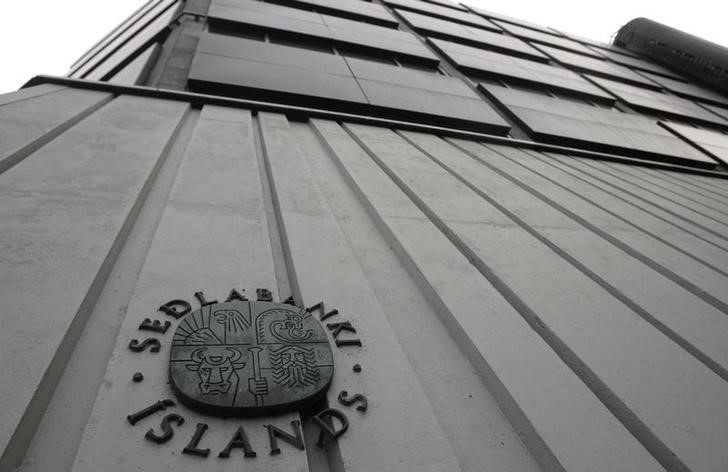LONDON (Reuters) - Iceland's central bank said on Friday that about $850 million (88 billion Icelandic crowns) worth of assets are still being held under crisis-era controls after a new round of purchases of the legacy bonds from foreign funds.
As part of the lifting of capital controls imposed during the 2008 financial crisis to stop money flooding out of Iceland, the bank wants to buy back the remaining assets - known as "offshore crown" - that were locked in Iceland during its eight years of controls.
It had extended the latest round of auctions to give more investors, which were mostly U.S. funds, time to sign up.
Since March 12, when most of the remaining capital controls were lifted, the central bank has bought a total of 112.4 billion crowns of offshore crown assets in two stages at an exchange rate of 137.5 crowns per euro, it said in a statement.
"The Central Bank estimates the stock of offshore crown assets at about 88 billion crowns following the trades."
While foreign holders can sell the bonds, the proceeds have to stay in a special ultra-low-interest Icelandic bank account.
The International Monetary Fund (IMF) on Thursday recommended Iceland roll back the reserve requirement on selected debt holdings to zero.
With lower interest rates in Iceland and global interest rates trending higher, the IMF said there was little reason to keep measures in place to manage capital flows.
U.S. fund Loomis Sayles has said it will not exchange its Icelandic bonds until it is offered the current exchange rate for the assets. The rate is significantly stronger, at 115.65 crowns per euro (EURISK=).
A tourism boom has helped economic growth in Iceland in recent years but has also pushed the currency up to levels where it hurts exports.

In response to the crown strengthening, the central bank this month cut its benchmark interest rate for the fourth time in less than a year to 4.5 percent.